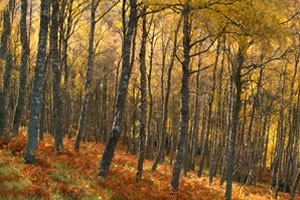 With the UK government setting an ambitious target of creating 30,000 hectares of new woodland every year by 2025 (involving a trebling of planting rates in England), there is will be an unavoidable impact on the countryside. As covered in a recent blog, the UK landscape is under increasing pressure to deliver often competing benefits to society – be it food production, biodiversity, carbon capture or housing.
With the UK government setting an ambitious target of creating 30,000 hectares of new woodland every year by 2025 (involving a trebling of planting rates in England), there is will be an unavoidable impact on the countryside. As covered in a recent blog, the UK landscape is under increasing pressure to deliver often competing benefits to society – be it food production, biodiversity, carbon capture or housing.
We have long advocated a nuanced approach to tree planting. In 2020, we published an article which stated that “the Game & Wildlife Conservation Trust believes that the ‘right tree in the right place’ approach is vital”. It was hugely encouraging, therefore, to see the government reinforcing this approach in the England Trees Action Plan in May 2021. This was further endorsed by the latest Environment, Food and Rural Affairs (EFRA) Committee report on tree planting, which states “to realise the benefit of tree planting, it is essential that the ‘right tree in the right place’ principle is followed”.
It is wonderful to see this message cutting through in government amongst other, larger wildlife charities. One of the key reasons for this is the strength of our research.
In the same section of the report, the EFRA committee cites our research: “The Game & Wildlife Conservation Trust raised concerns that a recent increase in planting in Scotland had been at the cost of semi-natural grassland habitats for several bird species of high conservation concern.”
It is important that government addresses the concerns raised in the EFRA report regarding appropriate mapping and guidance to drive the ‘right tree in the right place’ approach and acknowledges that there is no ‘one size fits all’ solution to conservation; we must consider the broader impact of any decisions we make. With competing government targets for tree planting, net-zero, and much more, plus increasing pressure to produce affordable, sustainable food, land needs to be used as effectively as possible.
Those keen on rewilding must also carefully consider what they want to achieve. As Mike Swan wrote in this article last year, “the concept that our country should be heavily wooded is a view based on just one phase of history, when humans were already having a major impact”. Planting trees can be a real boost for biodiversity and the climate, but that end goal must remain in sight throughout if we are to achieve the country’s full environmental potential.